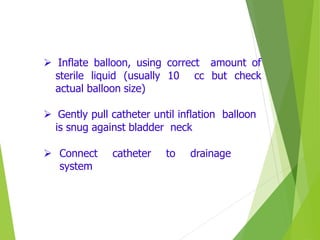Urinary catheterization involves inserting a hollow tube through the urethra to facilitate urine removal, requiring sterile equipment and trained personnel. The procedure serves various purposes, including relieving urinary retention and obtaining urine specimens, with different catheter types and sizes available for various patient demographics. Proper preparation, insertion techniques, and post-removal care are critical to minimize infection risks and ensure patient safety.

























